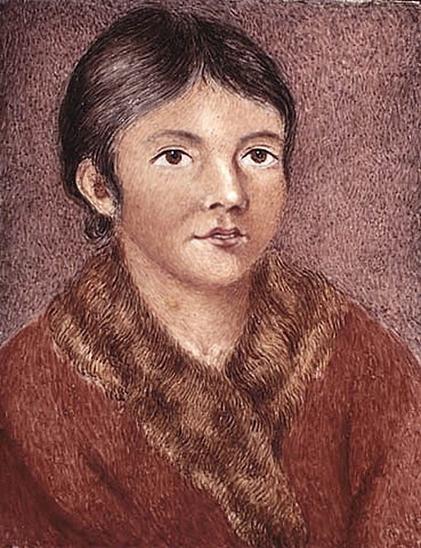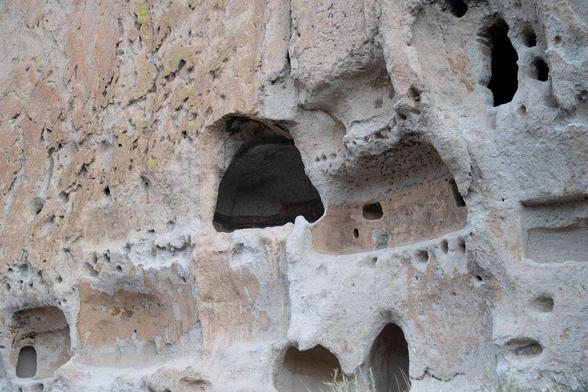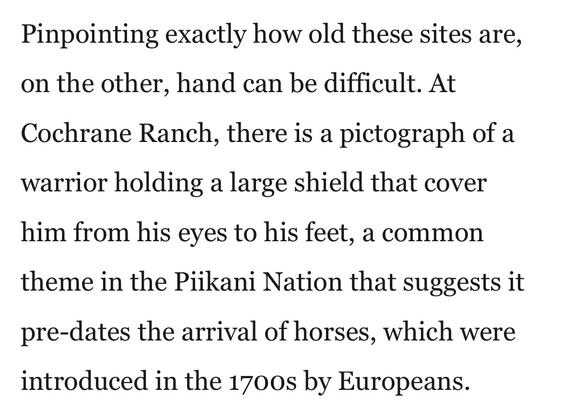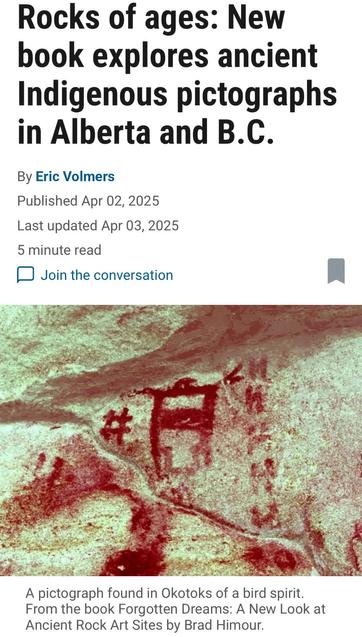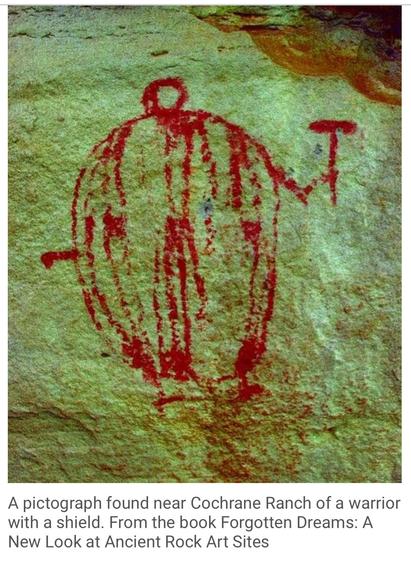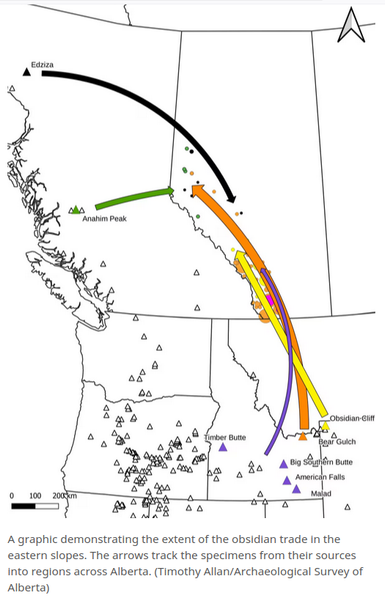National Library of Wales: Launching a new digital exhibition giving voice to Patagonia’s indigenous communities. “The Library is pleased to launch a new collaborative digital exhibition on the history of Welsh settlement in Patagonia from the perspective of the Tehuelche, Mapuche and Mapuche Tehuelche peoples in Chubut.”
#indigenoushistory
The ancestors of the #Menominee Indian Tribe of #Wisconsin built earthen mounds to grow crops. The site could be the largest preserved archaeological field system in the eastern United States
by Sarah Kuta - Daily Correspondent
June 10, 2025
"Hundreds of years before the arrival of the first Europeans, #Indigenous farmers were growing crops like squash, corn and beans in earthen mounds they built on Michigan’s Upper Peninsula.
"The mounds—created by the ancestors of the Menominee Indian Tribe of Wisconsin—likely represent the largest preserved archaeological field system in the eastern United States, according to a study published this month in the journal Science.
"Archaeologists discovered the mounds in May 2023 during the brief window between winter and spring. The winter snow had melted, but the leaves had not yet appeared on the trees. They surveyed 330 acres using a drone equipped with a laser that mapped subtle features on the surface—a remote sensing technique known as lidar.
"The team mapped an area that has cultural and historical importance to the Menominee. Located along the #MenomineeRiver on the #MichiganWisconsin border, this region is known as #AnaemOmot, or the 'Dog’s Belly.'
"The lidar uncovered a quilt-like pattern of parallel ridges that range from four to 12 inches tall. The mounds extend beyond the study area, suggesting the ancestral Menominee agricultural system was ten times larger than previously thought.
"The fact that the mounds still exist is unusual.
" 'Most field systems have been either lost or destroyed due to intensive land use across most of North America, through farming, including pastures and the cutting down of trees for urban development,' says co-author Jesse Casana, an anthropologist at Dartmouth College, in a statement.
"The research gives scientists a 'little window' into what #PreColonial life was like for the ancestral #MenomineePeople, Casana adds.
"During their excavations, the scientists also found several artifacts, including charcoal and fragments of broken ceramics. These discoveries suggest that the area’s Indigenous farmers may have dumped their household waste and the remnants of fires onto their fields, using them as #compost. Samples taken from the mounds suggest the farmers enriched the dirt with soil from nearby wetlands.
"The results indicate that ancestral Menominee people dedicated a lot of time and energy to agriculture in a remote area. The team has not found any significant settlement sites in the region—only a few small villages.
" 'It requires a lot of labor to create these fields, to clear the forest,' says Susan Kooiman, an anthropologist at Southern Illinois University Edwardsville who was not involved with the research, to NPR’s Nell Greenfieldboyce. 'This is dense forest, now and then. To clear it, only with stone tools, is a lot of labor, a lot of work. … The amount of work, and just how far these fields extend, is beyond anything that I think people suspected was going on this far north in eastern North America.' "
#FirstNations #IndigenousHistory #Menominee #TraditionalFoods #TraditionalFarming
🧡 Today we honour 𝐍𝐚𝐭𝐢𝐨𝐧𝐚𝐥 𝐈𝐧𝐝𝐢𝐠𝐞𝐧𝐨𝐮𝐬 𝐏𝐞𝐨𝐩𝐥𝐞𝐬 𝐃𝐚𝐲
We recognize and celebrate the history, heritage, and diverse cultures of First Nations, Inuit, and Métis peoples across Canada.
Let’s continue to listen, learn, and support Indigenous communities—not just today, but every day.
#NationalIndigenousPeoplesDay #IndigenousHistory #TruthAndReconciliation #CashinMortgages #CelebrateDiversity #HonourIndigenousVoices #IndigenousPeoplesDay #CanadaSupportsIndigenous
Her tragic capture in 1819, the loss of her family, and her community’s struggle are a powerful reminder of the painful, traumatic history that all Indigenous peoples everywhere have endured for centuries
#IndigenousPeoplesDay #Newfoundland #Beothuk #IndigenousHistory
2/2
In honour of National Indigenous Peoples Day today here in 🇨🇦, let us remember Demasduit, a Beothuk woman from the early 19th century -- one of the last of her people on Newfoundland
#IndigenousPeoplesDay #Newfoundland #Beothuk #IndigenousHistory #TruthAndReconciliation
1/2
This cavate in Bandelier National Monument was carved by the Ancestral Puebloans into volcanic tuff. These dwellings offer a glimpse into a way of life shaped by adaptation and creativity.
Follow for more stories in stone.
#Photography #Bandelier #Cavate #NewMexico #IndigenousHistory
The true founding fathers of America were Indigenous leaders—Chief Joseph, Sitting Bull, Geronimo, and Red Cloud. They bravely defended their lands, rights, and people against colonization. Their courage and legacy are the real foundation of this land’s history. #IndigenousHistory
Rice University: Rice students launch oral history archive to preserve Indigenous Texas stories. “Generations of silence are giving way to spoken truth through a new project at Rice University. In collaboration with the Texas Tribal Buffalo Project (TTBP), a nonprofit founded by Lipan Apache leader Lucille Contreras to restore Indigenous foodways and culture, Rice’s Weston Twardowski and a […]
National Centre for Truth and Reconciliation: New NCTR research identifies 140 Oblate priests and brothers who served in residential schools, aiding Survivor research. ” Through research, agreements and dialogue with the Oblates of OMI Lacombe, the NCTR has created a list of Oblate priests and brothers who participated in the administration and/or operations of these schools. Many of the […]
The Legacy of Chief Blackstone: Ojibwe resistance in Great Lakes history | Great Lakes Now
Ancient DNA confirms New Mexico tribe’s link to famed Chaco Canyon site
By CHRISTINA LARSON
Updated 4:12 PM EDT, April 30, 2025
"For the first time, a federally recognized #Indigenous tribe in the U.S. has led research using DNA to show their ancestral history.
"The #PicurisPueblo, a sovereign nation in #NewMexico, has oral histories and cultural traditions that link the tribe to the region of #ChacoCanyon, one of the ancient centers of #Pueblo culture and society.
" 'We’ve been telling our stories as long as time immemorial,' said Picuris Lt. Gov. Craig Quanchello. But he said those traditions were often 'overlooked and erased.'
"As members of the Picuris Pueblo seek a greater voice in shaping decisions about the future of Chaco Canyon, where debates about oil and gas drilling loom, leaders including Quanchello decided that using DNA sequencing to complement or corroborate their oral histories could be a useful tool. The group began a collaboration with an international team of geneticists.
" 'The DNA could help us protect' our heritage, he said. 'Now we can say, ‘This is ours, we need to protect it.' "
Read more:
https://apnews.com/article/picuris-pueblo-chaco-canyon-dna-a86588a281c70921e0c1920ff7b6b5d7
#CulturalErasure #CulturalGenocide #Colonialism #LandBack #StolenLand #IndigenousHistory
From 1776 to 1930, Native Americans lost over 90 million acres of land in the U.S. through treaties, force, and broken promises. A story of erasure, resistance, and survival. #IndigenousHistory #LandBack #NativeAmerican
Brown University: Collaborative project yields new digital archive on hidden history of Indigenous enslavement. “Long a password-protected database used mostly by researchers and people looking for ancestors, Stolen Relations is set to go public on Saturday, May 10, as part of a symposium at Brown. When it does, anyone in the world will be able to access its 7,000 records, a collection of […]
Found in my RSS feeds: Dispossessions in the Americas. “Indigenous and Afro-descendant peoples of the Americas have been dispossessed of their territories, bodies, and cultural heritage for centuries. Our site allows you to access art, maps, narratives, podcasts, storymaps, films, curricula, and more. Here, you can learn not only about histories of dispossession but also about ongoing […]
https://rbfirehose.com/2025/04/29/dispossessions-in-the-americas/
I still see the Lightening Man pictograph from northern Australia in my minds eye like it was yesterday. Wish we had more opportunity to see pictographs in Turtle Island, but racist vandals have wrecked it, so a book of enhanced images is now ordered.
Forgotten Dreams: A New Look at Ancient Rock Art Sites is now available. Visit forgottendreamspictographs.com
#DavidShaneLowry Calls for More Than a #LandAcknowledgement in Talk Hosted by Robert S. Peabody Institute of Archeology
by Christian Estrada and Tayla Stempson
Oct 18, 2024
"On Indigenous Peoples’ Day, the Robert S. Peabody Institute of Archeology hosted a talk by David Shane Lowry, a member of the #Lumbee Tribe and an Assistant Professor of Anthropology at the University of Southern Maine. His discussion centered on settler #colonialism, the #LandBack movement, and the importance of returning #IndigenousLands to their original owners.
"In an interview with The Phillipian, Lowry urged students to grapple with #IndigenousHistory in the current era, not just the past. He expressed his hopes for Andover students not to shy away from uncomfortable situations.
"'You have to make Native and Indigenous peoples part of today. They can’t merely be part of events/politics/wars in the past. Every experience that you all at PA have with your local and national community ought to be to work to reverse the realities that allow you to live comfortably outside of relationships with Native and Indigenous peoples,' wrote Lowry in an email to The Phillipian."
Read more:
https://phillipian.net/2024/10/18/david-shane-lowry-calls-for-more-than-a-land-acknowledgement-in-talk-hosted-by-robert-s-peabody-institute-of-archeology/
#IndigenousEducators #LandBack #DavidLowry #IndigenousVoices
The only thing Columbus discovered was that he was lost. Native peoples were here first, and their history should be taught truthfully. It's time to honor Indigenous voices and dismantle the myths. #IndigenousHistory
Obsidian artifacts unearthed in Alberta offer new clues on prehistoric trade routes
https://www.cbc.ca/news/canada/edmonton/alberta-obsidian-research-1.7495831
Tools of volcanic rock provide clues on how Indigenous peoples shared the landscape
🇨🇦 🇺🇲
#Indigenous #IndigenousHistory #archaeology #prehistory #TradeRoutes #obsidian
🎧 Just released: a gripping new episode of US History – Understanding This Country!
We cover the “Corrupt Bargain” of 1824, the rise of Jacksonian Democracy, the Panic of 1837, and the devastating human cost of the Indian Removal Act.
📚 Listen and reflect: https://url.thaliyal.com/Vtu79
#History #Podcast #IndigenousHistory #USPolitics #JacksonianEra


